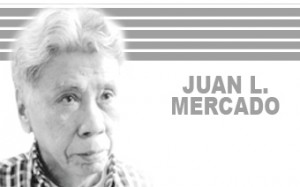 “Do you know what day this is?†asked the frail, seamy-faced Trappist monk. “Don’t bother me old man,†snapped his fellow prisoner, Jean Pasqualini. Both were trudging toward work fields in 1961 from their prison camp south of Beijing.
“Do you know what day this is?†asked the frail, seamy-faced Trappist monk. “Don’t bother me old man,†snapped his fellow prisoner, Jean Pasqualini. Both were trudging toward work fields in 1961 from their prison camp south of Beijing.
It was Christmas, Pasqualini suddenly remembered. He sensed the monk wanted to pray. “You’re mad,†he erupted.
“But I must,†was the gentle reply. “We’re the only two here to whom this day means something.â€
“Fifteen minutes, old man. No more. Understand?†Pasqualini hissed as the monk limped down from the ridge. Any minute a guard’s whistle could blow. Pasqualini squirmed. But only the winter wind ruffled poplars. He peered into the valley.
Below, the monk used a rock for an altar. A mug served as a chalice and a flattened tin can a paten. He had fermented wine from saved summer grapes. An unleavened loaf came from scrap grain. Tattered prison garb were his   Mass vestments.
“He knew he could be shot,†Pasqualini recalled for Reader’s Digest years later. “And whenever it is Christmas, once again I see him standing serenely in that freezing wind, holding wafer and wine, declaring his oneness with God.â€
In Christmas 2015, more people in China will “go to church than in the whole of Europe†where church attendance continues to dip, notes the British Broadcasting Corp.
How many Chinese Christians are there? asked Tim Gardam in a BBC Radio 4 program. Beijing claims 25 million. Roughly, 18 million are Protestants and six million Catholics.
“This is a vast underestimate,†the BBC said. A conservative figure is 60 million. Converts range from peasants in remote villages to sophisticated middle class youngsters in booming cities.
Mao Zedong described religion as “poison.â€Â The Cultural Revolution attempted to eradicate it—and failed. Driven underground, Christianity survived. With its own martyrs, it spread.
In the 1980s, religious belief was again permitted, albeit with shackles. The State Administration for Religious Affairs oversees “official churches.†Christians are corralled into designated places of worship. “Love the country—love your religion†is the slogan.
The Communist Party promotes atheism in schools. It undertakes “to protect and respect religion, until such time as religion itself will disappear.â€
This post-Mao rewrite renders unto Caesar what belongs to God.
The official Church has carved elbow room. But numbers attending official churches are dwarfed by “house churches.†These sprouted like mustard seed. “They unnerve the official Church which fears their fervor may provoke a backlash.â€
There is a large Catholic underground Church. The officially sanctioned Chinese Catholic Patriotic Association (CCPA) appoints its own bishops with agreement by the Vatican. Inch by inch, Rome and Beijing strived to come to an accommodation where no one yielded what it deemed essential.
Sanctions smash those who opt for communion with the Chair of Peter. “They feel lonely and helpless.†Some are frustrated by the Vatican’s policy of groping for a modus vivendi with the CCPA.
The 2015 US annual report on human rights worldwide notes“the Chinese government took steps to consolidate further its authoritarian monopoly of power over all aspects of its citizens’ lives. For religious freedom, this has meant unprecedented violations against Uighur Muslims, Tibetan Buddhists, Catholics, Protestants, and Falun Gong practitioners.
The Chinese Constitution states that it guarantees freedom of religion. However, only so-called “normal religions†– those belonging to one of the five state-sanctioned “patriotic religious associations†associated with the five officially-recognized religions (Buddhism, Taoism, Islam, Catholicism, and Protestantism) – can register with the government and legally hold worship services and conduct religious activities.
The government and Chinese Communist Party are officially atheist, with more than 700 million persons unaffiliated with any religion or belief. However, religious followers are strong and reportedly on the rise: more than 294 million practice folk religions, more than 240 million Buddhism, 68 million Christianity, and nearly 25 million Islam. The Chinese government monitors strictly religious activities, including by those recognized by the state, but unregistered groups and their members are especially vulnerable.
The new wave of persecution against Christians that swept through China in 2014 is the most egregious and persistent since the Cultural Revolution. Nevertheless, the number of religious followers, of Christianity in particular, is considered to be growing. In the name of fighting terrorism,
Even Hong Kong reels from stricter controls on the Internet and social media and targeting of human rights defenders, civil society activists, journalists and academics.
“Speak human words to humans and ghostly words to ghosts†is a Chinese proverb. It morphs into an excuse that ends justify means.
“I think it is very natural that many other people will not be satisfied,†professor He Guanghu of Renmin University in Beijing told the BBC. “They seek some meaning for their lives. When Christianity falls into their lives, they will seize it very tightly.â€
Pasqualini summed up He’s insight after the Trappist monk’s underground Mass. “Merry Christmas, Father Hsia,†he said. The monk smiled back: “Jean, Merry Christmas.â€##### (By Juan L.  Mercado)
